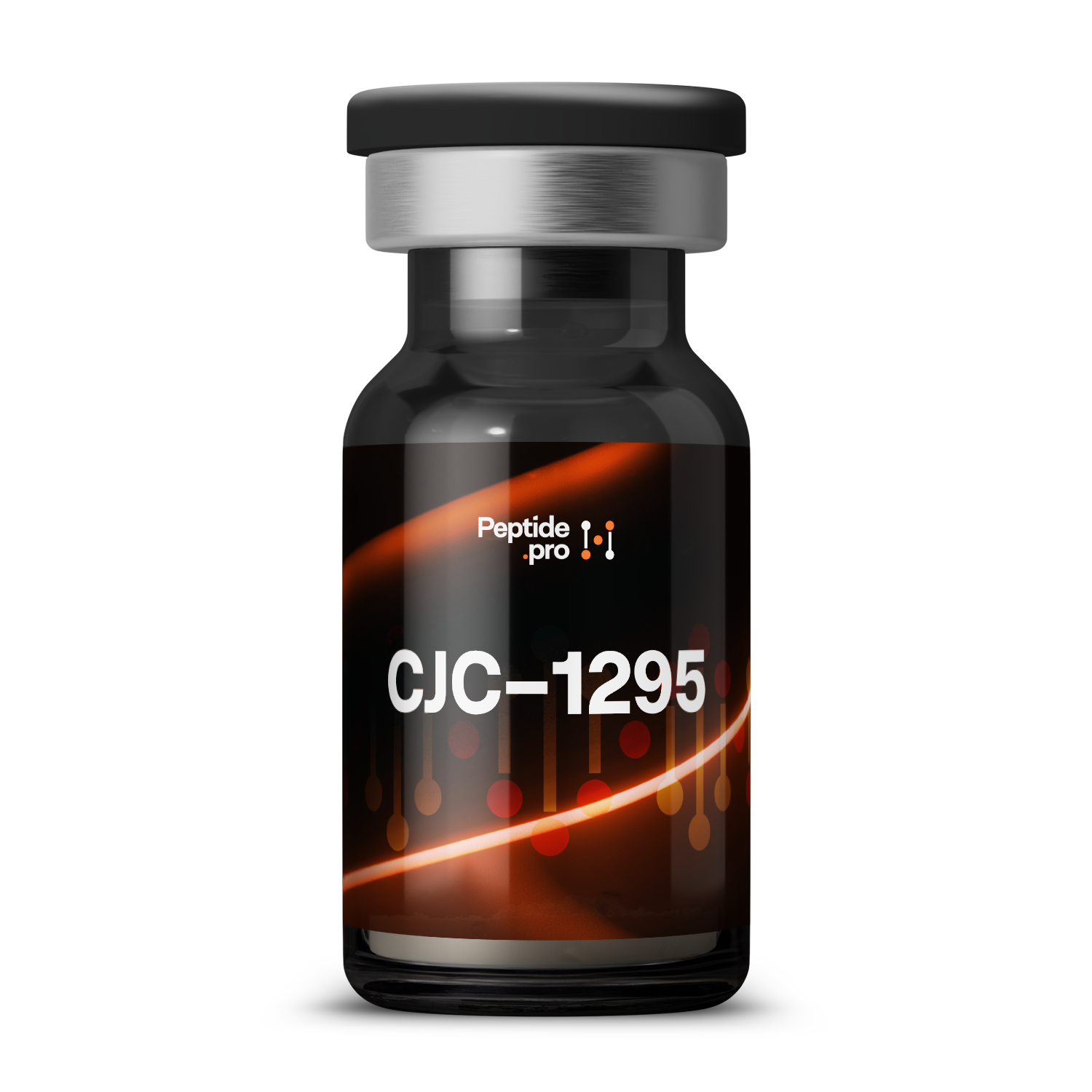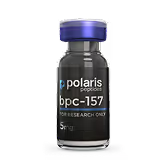CJC-1295
CJC-1295 is a synthetic 29–amino-acid peptide that stimulates the body’s own growth-hormone release over an extended period. By binding to growth-hormone–releasing receptors and staying in circulation longer, it helps raise natural GH and IGF-1 levels with fewer injections. It’s studied for its potential to support metabolism, muscle health, and aging research.
Compound Overview
About the product
The molecule includes the native GHRH(1–29) sequence with a lysine-to-arginine substitution at position 2 and a C-terminal DAC linker. This linker attaches to serum albumin, slowing renal clearance and protecting the peptide from degradation. It is synthesized by Fmoc solid-phase peptide synthesis and purified by preparative HPLC to over 95 % purity. Mass spectrometry confirms its correct molecular weight and sequence.
CJC-1295 binds to GHRH receptors on pituitary somatotroph cells, activating cyclic AMP signaling that triggers pulsatile GH release. Elevated GH in turn prompts the liver to produce insulin-like growth factor-1 (IGF-1). The albumin-binding DAC sustains receptor activation over several days, reducing injection frequency compared with native GHRH. Downstream, increased GH/IGF-1 supports muscle maintenance and fat metabolism.
The peptide is studied for its capacity to raise and stabilize natural GH and IGF-1 levels in adults. Human research shows that weekly dosing maintains elevated GH and IGF-1 concentrations for days between injections. Study subjects exhibited improved lean-body–mass retention and modest reductions in body fat compared with untreated controls. Investigators continue to explore its potential in metabolic health, age-related decline, and muscle-wasting conditions.
CJC-1295 side effects reported in studies have been mild, typically including injection-site discomfort and temporary fluid retention. No serious laboratory abnormalities or safety signals emerged in studies lasting up to four weeks. Long-term safety data beyond this period are not available. Extended research use should include monitoring of glucose tolerance and thyroid function.
The peptide is assembled via Fmoc solid-phase synthesis on a resin support, incorporating the GHRH(1–29) sequence and DAC linker. After cleavage from the resin, it undergoes preparative HPLC purification to exceed 95 % purity. Mass spectrometry verifies sequence integrity. Production adheres to research-grade peptide compounding standards.
CJC-1295 is authorized only for laboratory research and lacks approval from the U.S. FDA, EMA, or similar bodies for therapeutic use. It cannot be prescribed or dispensed clinically. Institutions obtain it under investigational-new-drug (IND) or equivalent frameworks. No commercial pharmaceutical formulations are available.
Clinical protocols typically administer 1–2 mg subcutaneously once or twice per week. Common practice is one injection every seven days. No consensus dosing guidelines exist outside approved research studies. All use should follow institutional review–board–approved designs.
- Do restrict use to IRB-approved research settings.
- Do monitor GH, IGF-1, glucose tolerance, and thyroid function.
- Don’t combine with exogenous GH products without oversight.
- Don’t use during pregnancy, lactation, or active malignancy.
- Q: How quickly do GH levels rise?
- A: GH increases within hours and remains elevated for several days.
- Q: Does it affect other hormones?
- A: No significant changes in cortisol or ACTH have been observed.
- Q: Can it be used daily?
- A: Its extended half-life allows weekly dosing; daily injections are unnecessary and unstudied.
For research use only. Not approved for medical use.


